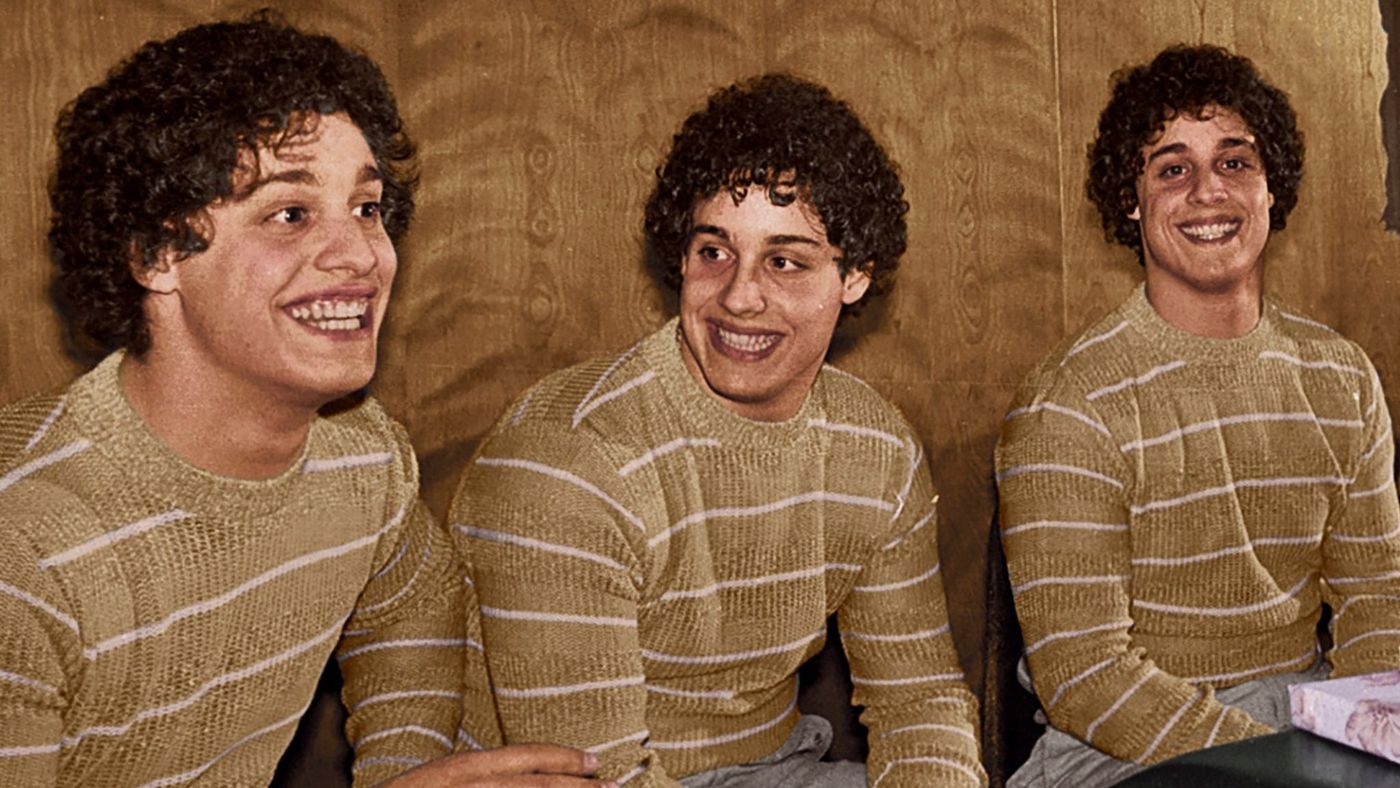 Three Identical Strangers tells how triplet brothers born in New York City in the 1960s were separated at birth, adopted out to three different families, and then how they accidentally discover one another and reunite. The story is an entertaining one. When they find each other in the early 80s, the event became a national sensation, and the brothers enthusiastically embrace all the publicity – newspaper headlines, magazine covers and interviews, and television. Phil Donahue and his gawking audience marvel at the wonder of human biology – three boys separated for 19 years but they have the same taste in cigarettes and women!
Three Identical Strangers tells how triplet brothers born in New York City in the 1960s were separated at birth, adopted out to three different families, and then how they accidentally discover one another and reunite. The story is an entertaining one. When they find each other in the early 80s, the event became a national sensation, and the brothers enthusiastically embrace all the publicity – newspaper headlines, magazine covers and interviews, and television. Phil Donahue and his gawking audience marvel at the wonder of human biology – three boys separated for 19 years but they have the same taste in cigarettes and women!
With their new, quasi-celebrity status, the boys party at the hippest clubs. They open a restaurant together. They cameo in a movie with Madonna. All of this, in other words, seems like a fairytale about long-lost siblings being happily reunited. But, of course, most fairytales have one or two dark plot twists, and Three Identical Strangers is no exception. The brothers and their parents get hints that their separation at birth was suspicious. The adoption agency is vague while answering their questions about why they weren’t placed together in a single family. An investigative reporter comes forward with more information that brings a psychologist into the picture. Other twins find each other and similar patterns appear.
The film ends up going beyond an entertaining story of triplets finding one another and partying in Manhattan to an exploration of nature versus nurture, the hunt for answers to why their separation occurred, and the examination of what is ethical science.
Two thumbs up.